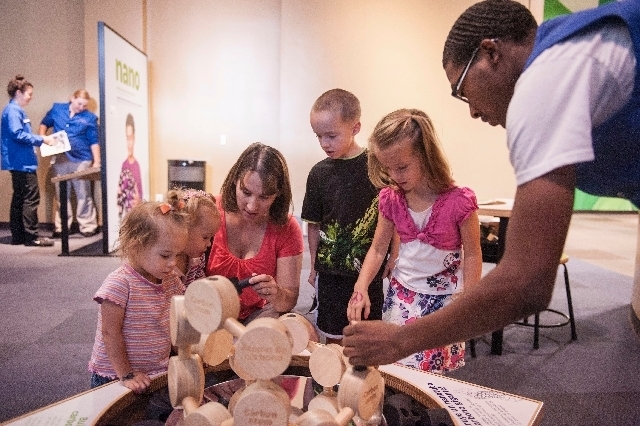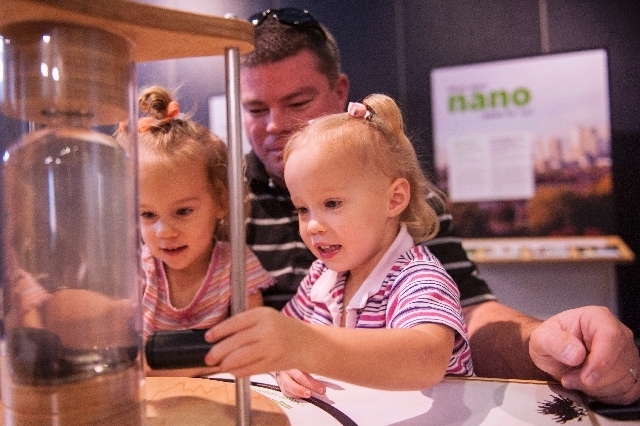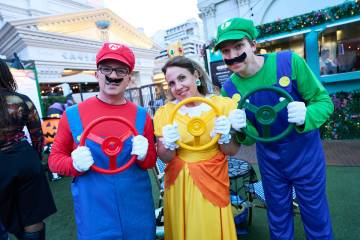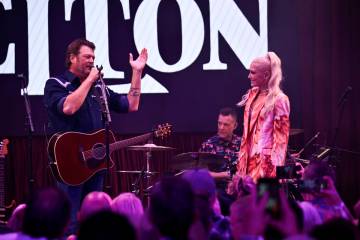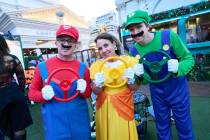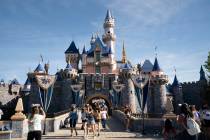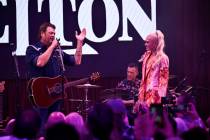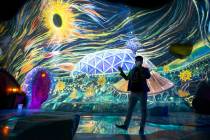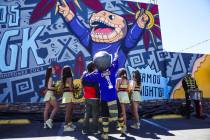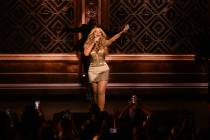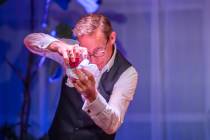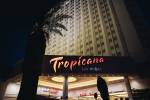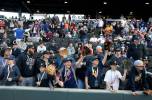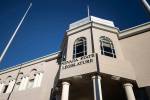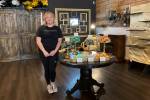‘Small, Smaller, Nano’ explores nanotechnology through interactive exhibits
Let’s get small. Really small.
No, even smaller than that.
A freckle’s a million times bigger. A strand of hair is 100,000 times as big.
But despite its tiny size, a nanometer — a billionth of a meter — looms large in the realms of nature and science.
For proof, and for fun, look no further than the “Small, Smaller, Nano” miniexhibit at the Discovery Children’s Museum through Dec. 3.
And when they say miniexhibit, they mean it.
The 400-square-foot traveling display takes up a fraction of the 5,000-square-foot hall that previously welcomed “The Real George Washington: New Views From Mount Vernon.”
The exhibit “really is nano-sized,” says Tifferney White, Discovery’s deputy director.
But its subject is anything but.
“We have it all about us,” White says of nanotechnology. “We just don’t necessarily know about it.”
Nanotechnology makes computer chips smaller and faster. Tiny carbon nanotubes make bicycles, golf clubs and tennis rackets stronger and lighter. (Visitors to “Small, Smaller, Nano” even can construct their own nanotube models from foam building blocks resembling oversized Tinker Toys.)
The liquid crystal display on your cellphone, the unmistakable aroma of a peeled orange, the way frozen water molecules arrange themselves into six-sided snowflakes — all examples of nano-sized particles in action.
White cited a more practical example for Southern Nevadans enduring another midsummer swelter: sunblock.
Once a thick, white paste, sunblock has been transformed through nanotechnology; it now seems to blend into your skin when you apply it because its zinc and titanium dioxide particles have shrunk to nano-size, she explains.
“They still block the UV rays,” she says of the particles, but the sunblock “appears to go on the skin. Now we look better.”
The “Small, Smaller, Nano” miniexhibit offers kids of all ages plenty of chances to explore the ins and outs of nanotechnology through interactive exhibits.
The Discovery Children’s Museum is one of about 50 institutions to feature the display, created by the Nanoscale Informal Science Education Network with support from the National Science Foundation. (After it finishes its Discovery run, the exhibit goes back to the Turtle Bay Exploration Park in Redding, Calif. )
And while there’s plenty of science in the exhibit, “you don’t have to know anything about nano to have fun with” the hands-on displays, White says.
At the “Where Can You Find Nano?” display, visitors see, smell and touch, learning about nano-sized attributes — from a Blue Morpho butterfly’s color-shifting wings to the water- and stain-resistant fibers on a toy teddy-bear’s tummy.
Another display shows what inspired those fibers: the small, waxy bumps on a lotus leaf, which is covered with tiny whiskers to repel dirt and water.
In another corner of the exhibit, spin a pair of discs with different-sized particles and watch as the larger beads fall, succumbing to gravity, while smaller beads remain in motion. (Nano power strikes again.)
Three sizes of magnetic particles (you guessed it: small, smaller and nano) illustrate the same principle.
Spidery globs of magnetic sand break apart inside a fluid-filled tube as a young visitor applies a magnet to the tube’s exterior, but the nano-sized iron oxide particles suspended in liquid (known as ferrofluid to the NASA scientists who invented it in the 1960s) stick together.
“This one takes all of it!” a little girl exclaims to her mother as she shifts the magnet, observing how the nano-sized particles follow her magnetic moves.
NASA scientists came up with ferrofluid as a way to control liquids in space; these days, it’s used in loudspeakers to dampen vibrations, in car brakes and in the rotary seals of computer hard drives.
Another section of the miniexhibit cites other nanotechnology breakthroughs, from experimental cancer treatments to teabag-sized filters that remove bacteria and viruses from water in areas without safe drinking water for pennies per treatment.
Despite these advances, nanotechnology is far from new.
“We’ve been using it for centuries,” White points out, citing the example of stained-glass windows.
Anytime you see a glowing red, it’s “actually nano-gold,” she explains — which, depending on the size of the particle, can appear green or red.
But that’s the way of the nano-world, where things you can’t see play a big role in the one you can.
For the past three years, the Discovery Children’s Museum (and its predecessor, the Lied Discovery Children’s Museum) has hosted NanoDays , a nationwide educational festival held at more than 200 science and children’s museums, research centers and universities.
But the “Small, Smaller, Nano” exhibit goes even further, according to White.
The exhibit takes “research being done in labs in nanotechnology, nanoscience and nano-engineering, and presents it so lay people can grasp and understand it,” White says.
“And the best place to do that? Museums.”
Contact reporter Carol Cling at ccling@ reviewjournal.com or 702-383-0272.
Preview Small, Smaller, Nano miniexhibit 10 a.m.-5 p.m. Mondays through Saturdays, noon to 5 p.m. Sundays through Labor Day; exhibit continues through Dec. 3 Discovery Childrens Museum, 360 Promenade Place $12 (382-3445, www.DiscoveryKidsLV.org)



